|
editors note. We at Marin Fire History often develop an idea for a story only to set it aside. Chief Bill Lellis began researching this month's article over five years ago. With life's distractions and priorities we promise ourselves "I'll get back to it..." with the posting of this article, we did! This story has particular significance for Bill as he was the Assistant Chief of the Larkspur Fire Department in 1978 when air tanker pilot James Lippitt met his end. James and his family were Larkspur residents. Chief Lellis knew the Lippitt family, as Larkspur still had that small town feel. Chief Lellis wants us to remember James as a young Marin man with a bright future who perished too soon. ed. 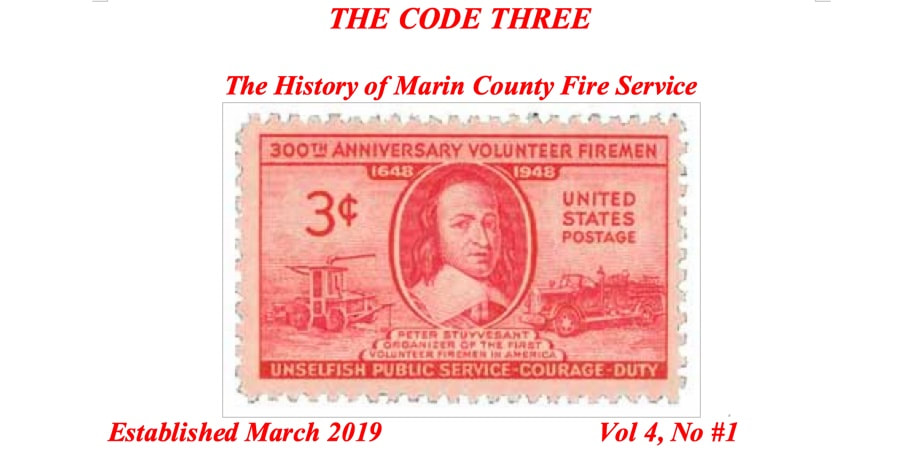 Gone Too Soonby Chief Bill Lellis (ret)Our Friend Tom; His Storyby Chief Bill Lellis (ret) Introduction When Tom Forster began his historical website, it was always his intention to video record the history of the county’s fire service personnel. So, one Saturday morning we met at the Novato Fire Museum and recorded our first candidates, Oakley Dexter and Dale Eubanks, two volunteers from Larkspur with over 50 years of service. Tom and I then agreed to interview one another and so he interviewed me first. It was my turn to interview him next, but as things tend to go, it got pushed to next week, then next month, until eventually that time never came. So today I thought I would sit down and tell the story of Tom Nelson Forster and the footprint he has left. Tom was the fourth of five generation of fire service personnel. The Nelson Family In 1880 the Nelson family would emigrate from Europe and come to America before the 1906 quake. Anton Nelson came from Sweden, and Lena Fischer from Germany. Anton worked for the Leland Stanford family as a coachman and Lena for the Otis Elevator family as Mrs. Otis's handmaiden. Anton used to drive Mrs. Sandford to the cemetery by coach every Sunday to place flowers on Leland's grave. Lena and Anton met and married in 1899 and owned a rooming house in San Francisco until the earthquake wiped them out. Like thousands of others, they moved to Larkspur. Anton went to work for the Pixley family in the Owlswood area of the town. They rented 69 acres for $25 per month as caretakers for the Pixley dairy. Anton and Lena had five sons and one daughter. One of those sons was Frank Nelson, Tom's grandfather. 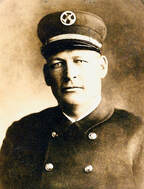 Battalion Chief Charles J. Thaler Tom’s great, great uncle Charles J. Thaler (on his father’s side) was a Battalion Chief with the Oakland Fire Department. He joined the department on January 1, 1906. As a rookie, after the earthquake, he volunteered to be on a rescue team to go to the city and assist the Red Cross in dealing with the dying and mending the wounded. He made Lieutenant in 1913 and the next year was promoted to Captain. On June 1, 1918 he became a Battalion Chief. The work schedule in those days was seven shifts in a row. He retired in 1933. 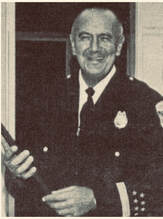 Chief Frank Nelson ( 1910-1992) Frank Lars Nelson entered the fire service in 1934 when he joined the 20-man Corte Madera Volunteer Fire department. To say that Chief Nelson was a valued town employee would be an understatement; Frank was undoubtedly the town's most versatile worker and would take any assignment given him, such as Tax Collector, Building, Plumbing, and Electrical, Inspector, in addition to serving as Police Chief. To top it off, at one time he was the town's dog catcher. In 1969 he would become the first full-time fire chief. He had a brother Bill, who gave over 50 years with the volunteers. Service seems to run with the Nelson’s. On many occasions, as a young firefighter I had the opportunity to respond to many fires that bordered both towns and observed Chief Nelson's leadership qualities. It seemed no matter the seriousness of the incident he was calm, very little if any yelling and he always paused for a moment before responding to a question. He had a great understanding and patience with the situation that was under his command. He would retire in 1974 after serving the citizens of his home town for 40 years. I would see this personality trait many years later when a young Tom Forster joined the fire service. 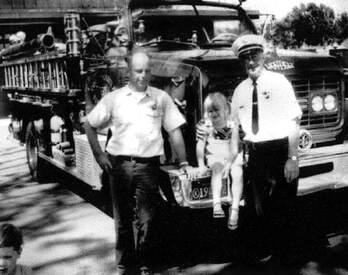 Tom’s father Jack was born in Fairfax and was a member of Sir Francis Drake High School's first graduating class. He went to work for Fairfax Public Works as the town's landscaper. Along with his co-worker Chuck Kroeger, he would start a successful landscape business. Jack was a Boy Scout and was involved in the development of Camp Tamarancho. He served in the U.S. Coast Guard and then joined the Corte Madera Volunteer Firefighters. Under the tutelage of his father-in-law, Chief Nelson , Jack would become a Captain and serve as President of the Board of Directors. Jack takes one of the kids to visit grandpa "My father was my idol and mentor, and I always wanted to grow up to be the type of person he was: kind, generous, and hardworking; including being a very devoted member of the fire service." Small Town Politics Enters the Fire Department On two separate occasions politics would find its way into Tom's beloved volunteers impacting his future career. Like most departments in the county, we all had areas that we responded to knowing it was not in our department’s authorized limits. Historically, we all responded into these areas when there was an emergency. The town of Corte Madera would take exception to this policy. They had two strips of land that ran parallel to Highway 101, known as the Meadowsweet area, where Marin Joe's Restaurant is now located. That area was part of the county jurisdiction , and the Marin City station was first assigned to respond to any calls there. Chief Nelson would also answer the call and stay on the scene until the assigned Marin Coounty or Marin City engine arrived. The town council wanted this area to be annexed, but the citizens living there were happy with the town responding also. Chief Nelson was ordered by the Town Manager to discontinue responding to these areas. Chief Nelson turned a deaf ear to this order when he responded to a flue fire at Marin Joe's. The Town Manager asked that the chief be suspended for ten days without pay for taking equipment outside the city limits to douse a flue fire. “Fire Outside City Is A Burning Issue” is what the local newspaper called it. But the event that broke the backs of the county and town officials was a house fire that had erupted outside the town. The volunteers were ordered to stop their engines less than 200 feet from a working structure fire and watch the house go up in flames. County dispatch asked Larkspur if we would respond to mutual aid request to this incident. I remember driving past the Corte Madera engine realizing their situation; it was an unfortunate moment for all of us. I remember seeing the occupant of the fire holding her baby in her arm and screaming at the firemen because they were not helping to save her home. Chief Nelson took a lot of heat for his action, which was not of his making. Soon after this incident these areas were annexed into the Town of Corte Madera. The Volunteers: Firemen Threaten to Quit Chief Nelson announced his retirement. In Marin County, it was traditional that when the Chief retired, the Assistant Chief would be promoted. You’d think this would be a happy time for Tom and his father, Jack, who was the volunteers' President. All seemed well until the City Manager and the City Council stated that they would recruit for the Chiefs' position on a statewide basis. The volunteers would have no part in this procedure. The fight was on. Tom's father, Jack, would carry the fight to the town. The volunteers told the town if they did not promote the Assistant Chief, they would dissolve their organization in 60 days. The town would have no part of this threat and went forward with their statewide recruitment. On October 10, 1975, the volunteers followed through with their threat and all 15 men resigned in mass, removing all equipment and furniture from the station and leaving the town with 11 paid personnel to protect the community. Organized in 1910, the resignations would bring to an end to the volunteer organization’s 65 years of serving their fellow citizens. A gentleman from Orange County was appointed chief. About six weeks later he resigned and returned to his old job in Southern California. 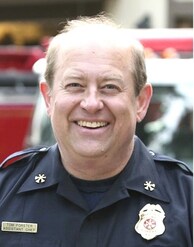 Tom Forster (1958 – 2018) Tom was born in 1958 to Jack and Diane Forster at Marin General Hospital. I cannot remember not knowing Tom. On many occasions we would talk and he would tell me what it was like being surrounded by all this fire service history. Imagine a young boy is sitting in the family living room on a Saturday morning watching his favorite cartoons when his father asked, "Hey Tom, do you want to go down to the station and see grandpa?" Before his father could grab his coat, Tom was in the front seat of dad's truck. He got to sit in the corner and listen to the old volunteers tell tales of years gone by, with their acts of heroism and saving the damsels in distress. Tom's introduction to the fire service would fulfill his lifelong wish to be a volunteer firefighter for the Town of Corte Madera. He was allowed to imagine driving the big red rigs to fire as he sat in the front seat of his grandfather's fire trucks. He was so proud of this history and that his family gave five generations of service, which Tom estimated to be over 225 years of combined service. Tom attended school in Larkspur, graduating from Redwood High in 1976. He was a member of the rowing team and enlisted into the California Civil Air Patrol. Tom had a neighbor who was a commercial pilot, and Tom’s goal was to be a pilot as well. Training took place at Hamilton Air Base in Novato and Mather Air Base in Sacramento. As he approached graduation into Civil Air Patrol, he had to undergo a rigorous physical, and it was then that he was informed that his vision was not 20/20 and he could not fly with the Air Patrol. Tom’s mother remembers how devastated he was upon hearing this news. After graduating high school Tom had the pick of any university in the country, including the United States Naval Academy at Annapolis Maryland. He chose the University of California at Berkeley. Tom was a home boy- he cherished the small town atmosphere. After only a few semesters at Cal he informed his parents he wanted to attend the College of Marin and major in Fire Science and Business. The politics surrounding the volunteers disbanding hit Tom very hard. Not only was his father involved with the negotiations with the town, but his dream of becoming a volunteer with his grandfather’s department was shattered. Tom was only nine months from turning 18 at which time he could apply to be a volunteer. Tom quickly assessed his situation and decided to apply with the Larkspur volunteers. Fortunately for him and the fire service, he was welcomed with open arms and his dream was about to become true. He became a sleeper volunteer and was assigned to Larkspur Station which served the Greenbrae area. It was a six-bed open dorm shared with two paid men. He was soon joined by Jim Busher and Matt Gustafson, who were without a doubt the best group of young men who ever slept in this station. (All three would go on to work at Skywalker Ranch.) Each sleeper was assigned a 24-hour work schedule. At any time they were in the station and a call broke out, they were required to respond. This fire ground operations experience was extremely helpful in developing their future careers. These young men would learn discipline and how to follow orders when men’s lives depended on them. Most of the paid staff were veterans and they helped develop these rookies into one of the finest group of firemen. 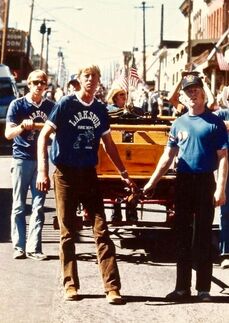 Tom’s Projects It was quite evident very early in Tom’s career that he was an exceptional young man. He was a natural leader and the other volunteers gravitated toward him. The following projects that he undertook are just a few examples of his leadership and dedication to the department. At the age of nineteen he was elected to become Larkspur Volunteer’s youngest President. After the Rose Bowl dance property was sold, the volunteers now had a rather considerable treasury, and the question was asked: “What will happen to these funds if the volunteers disbanded?” They were a federal non-profit organization and the bylaws were subject to their approval. Tom volunteered to undertake the rewriting of those bylaws to address these funds. It was a very tedious project, but the Internal Revenue Service accepted their new bylaws. Matt and Tom pull the handcart at the Columbia muster The volunteers purchased an 1836 hand pumper from Austria that was in bad condition. Tom organized a work team and renovated it to museum quality. When he was done, this antique could pump 120 gallons per minute with 4 to 8 men on the rails. Another one of his most memorable projects was to organize a regional fire muster, where firefighters competed from all over Northern California and Nevada . One of Tom’s proudest projects was restoring the 1916 Model “T” to its original vintage. This antique apparatus had an odyssey of its own. The volunteers modified it two times, adding a braking system and rocky mountain rear chain drive, before selling it to the newly formed Kentfield Fire District in1923 along with one hose cart for $1,100. Kentfield would later sell it to a resident who turned it into a lumberyard saw operation. In the early 1960s, it was brought to our attention that most of that old model T was found in a garage, and would we be interested in buying it? Captain Craig Shurtz volunteered for this restoration and the 1916 Model “T” was once again ready for duty. But something was missing, the chemical tanks that made it a real firefighting truck had to be found. His uncle, Tom, who had a salvage yard in northern California, called him one day and said, “I think I found those tanks you have been looking for, and if you come up here, they are yours.” He was flown up to the salvage yard and returned to put the “T” back in service. Henry Ford would have been impressed with their work. In Pursuit of Excellence Tom received his A.A. degree in Fire Science from the College of Marin in 1999. He transferred to California State University, Chico and earned a B.A. in Physical Science, Natural Science in 1993. 10 years later Tom would receive his Master’s in Human Resources and Organizational Development from San Francisco State. Summer Relief While Tom was attending the College of Marin and Chico State he was a summer relief fireman with Larkspur. He was paid an entry level salary and was the tail board member of the crew. In those days it was common to hire from the volunteer organization so there was no need for a big search or written test. We knew these candidates and they knew our system. When an opening occurred it was Tom’s to have. We offered him the position but he turned us down. I cannot tell you how disappointed I was; he would have made a wonderful contribution to the department. When I asked him what he was going to do, he said he was taking a position with some film company on Lucas Valley Road. I think they called it Skywalker something. A Helping Hand If Tom had one fault, it’s that he could not say “no” to any friend who needed his guidance and understanding, or to help with a difficult situation. It is hard to have a sense of how many helping hands he had extended at his passing. Saying yes was not a fault of his but a gesture of love to all who asked for his help. This humble prose can only touch the surface of this man’s life and his deeds. I hope that the future generation of firefighters will take the time to get to know our friend. I do not want his story lost to the mist of time Farewell To Our Friend As we travel through life and look back over our shoulder and can say I had four great friends, then you have been truly blessed. We lost our great friend Tom. His contribution to the fire service must not be lost. For the future recipients of the Award in his name, they must fully appreciate their award and the man named after it, Thomas Nelson Forster. Plumas State Park and the path to the memorial bench. State parks do not allow names of the honorees to be posted The meadow Tom and his wife Maureen walked to for its simple beauty. Mr. Lucas picked this meadow because he would have to drive past it going to and from his office We leave Tom for a moment. It is 1984 and Tom stands at the gates to Skywalker Ranch about to embark upon a wonderful and sharing 34-year career. More on this story in the future. I would like to thank Tom’s mother Diane, a wonderful woman, for taking the time to sit down with me and tell us the story of her son. Bill Lellis A Few Who Received His Hand of Friendship
Tom was a friend and a mentor. I first met Tom in the 1980s and he was and remains highly influential in my life and I will never forget his contributions. I first observed and learned from Tom in his role as a planner and facilitator. And he planted that seed of interest in me right from the start. He showed me that planning, goal setting, and presentation skills are powerful tools. I remember watching him arrive with his easel and poster boards in the goal setting sessions for the Prevention Officers and Training Officers sub-sections of the Marin County Fire Chiefs Association. I watched (and participated) as he worked with groups and individuals in the planning process with SWOT analysis, brainstorming, accomplishment listing, and goal setting. I soaked in every ounce of information I could while observing his ease and skill in his roles of leadership, meeting facilitation, planning, goal setting, education, and multimedia presentations. Using the skills that Tom taught me, I’ve been able to act as a facilitator on multiple occasions for group goal setting sessions. I also find these skills extremely valuable as a Plans Section Chief on a Type 3 Incident Management Team. I also remember when he taught me about creating multimedia presentations. We started off with 35mm slides in synced trays to cassette music. Then we transferred to computer-based presentations with digital photography. Over the years I have been able to create presentations for family reunions, retirement parties, and numerous other events. In addition to multimedia presentations and professional planning, Tom taught me the importance of planning in my personal life as well. He introduced me to a system he was successfully using called the Franklin Day Planner, which was more than a calendar and to do list - the system helped me define my guiding values, identify what mattered most to me, and how to prioritize it all - in all aspects of both my personal and professional life. Throughout our relationship Tom was always generous with his attention, time, and knowledge. He always gave me his focused and undivided attention and he made me feel important by carving out regular time for our conversations, meetings, and phone calls. He always had a new book, topic, idea, or back-story for context on local and historical events. Jeff Davidson, Mill Valley Fire Chief Ret. I too am struggling to find the words that might even come close to properly honoring a man who has meant so much to so many. I have known Tom my entire life as part of the extended, yet for me, local fire service family. My earliest memory of Tom was watching him compete in the fire department musters back in the 70’ in Larkspur. Young and athletic, Tom was an impressive firefighter. So many years later, I’m remembering Tom as my first fire chief. The man who gave me and so many others their start in the fire service. But his impact on my life was so much more significant than simply “ giving me a shot.” The term mentor gets used a lot these days. But Tom was, more than anyone I’ve known, a true mentor to so many. I am sure that there are literally hundreds that could say they saw Tom as a mentor of theirs. Who else could we say that about? It speaks directly to who was as a person, to his heart, his compassion and his interest in others and their goals A brilliant thinker, Tom had a special knack for understanding how the details relate to the big picture. A strategic planning guru, Tom guided so many individuals and groups toward their goals by inspiring, coaching and facilitating. Instead of providing the answers or the roadmap, he led folks to discover the solutions and strategies from within that worked for their specific goals. I talked with Tom often throughout my career and always came away with some pearl. Fresh perspective, or renewed outlook on the challenges and opportunities ahead, But his appreciation of history and respect for those that came before us was always woven into the message. His work on the Marin Fire History project is just one example of his belief that the past matters and that it should be understood in order to move forward with effect. I’m so grateful to have known Tom as a good friend, colleague, and mentor. He was my Yoda and will be missed. Scott Shurtz Fire Chief Central Marin Fire Ret. World Fire History - a stamp at a timeby Chief Bill Lellis (ret) Thank goodness the end of an era is at hand! It is our hope it will pass into the celestial calendar never to be heard from for all time, but there is hope on the horizon.
It is the time that we reflect on this past year, I must give kudos to all who helped keep the Marin Fire History site alive and well. I thought I would say a few words about the year 2020 and thank all those who helped put this production on the air. Chief Paul Smith of Kentfield (ret), for the information regarding his father, the fire protection engineer, who helped develop the life-saving system we call NFPA Standard 13D. This is the standard for fire sprinkler protection in American homes. Who knows how many lives he has saved? New to our fold is Jim Mann; Jim is a San Rafael boy who now lives in Novato with his wife Terry, an RN, . Jim was hired by Marin County Fire Department in 1972. He became a legendary dispatcher with the county and retired in 2003. To stay out of trouble he has coached softball for San Marin High for 23 years. Welcome aboard, Jim. Then there is our Web-Master , curator, Dan White, who spins his magic in producing all of our stories and images. His creative ability is beyond reproach. Dan is the man who is really responsible for keeping this Marin Fire History group together and productive. This year saw the Larkspur Volunteers fade into history. After over 100 years of service to the citizens of Larkspur, these dedicated men and woman are no longer. Due to national and state requirements average citizens cannot give back to their community as volunteer firefighters. The of hours of training necessary to fulfill all the requirements has become burdensome for volunteer members. As a member of the Larkspur Firefighters since 1958 I am so proud to have been associated with this band of fellow firemen, I will miss them. We cannot forget all those guests who allowed us to tell their stories, from the helicopter pilot, the now retired firefighters whose careers started as Resident Firemen (let’s call them what they were “Sleepers”), those who evolved the Marin Search & Rescue team and all of you who have contributed. To those who requested stories for us to follow-up on and the name of a person who you thought may be helpful to the productions of this website, we thank you one and all. These are strange times we are living through, and since we are a history orientated group, I thought would share with you one of my hobbies, philately, or one who collects old sticky pieces of paper, called postage stamps. Being that it is the holidays I thought you might enjoy all the pretty images. Today's notebook will deal with the history of the world's fire service through postage stamps. I will admit it is a departure from the History of Marin County Fire Service but my thinking is some of our readers may find this subject very interesting not only for themselves but maybe one of their children or in most cases grandchildren. I joined the Fire Service in Philately. The editor is a retired Captain from the Buffalo New York F.D. We have members from all over the world. The subject matter found on the worlds stamps is a fireman's dream, you pick the fire service area, and some stamps reflect your subject of interest. So, I will share with you just some of these little pieces of our world history. Seven Year Old Rescued After 90 MinutesBy Chief Bill Lellis (ret) Larkspur Fire Department 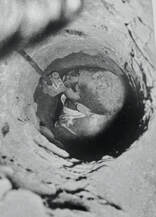 If you have been in the fire service for 20 to 30 years, you have responded to hundreds and hundreds of rescue calls to assist the community's citizens. Most of these calls have been lost over time. However, there is always one or two of those rescue incidents that linger in our minds' shadows. Something we see on TV, or a comment an old friend may say, and that call becomes a reality as if it happened yesterday. The rescue of a little seven-year-old boy from Corte Madera, who fell into a 16-foot foundation hole at the construction site of the Redwood High School and was stuck there for 90 minutes, is one of those memorable calls for me. Our story takes us Redwood High on a summer afternoon in 1961, when a young lad and his friend from Corte Madera crossed over the railroad tracks onto the construction site of the high school in search of frogs. The site selected for this new school was referred to by the town people as “the slough”. It was marshland, inundated twice a day with tidal action from the San Francisco Bay. Scattered throughout the site were caisson holes for the gym's foundation. The holes were to be filled with steel forms and concrete the very next morning. Until then, they were covered with sheets of plywood to prevent anyone from stepping into one. What could be more fun for a couple of 7-year-olds but spending a summer day on a wild animal hunt, looking for slippery amphibians? And if they were lucky, maybe they could bring one home to mom. What a pleasant surprise it would be, all wrapped up in a glass masonry jar. So, the hunt was on, turning over every rock or piece of debris that the disgruntled frogs could hide under. In his joy of the search, our young frog hunter failed to see that one of the caisson holes was not covered. Before he knew it, Neil was stuck 8 feet down the hole with his arms along his side and pinned tightly against the walls. Like anyone in this situation, Neil began to cry - his cries could be heard throughout the construction site. Fortunately for Neil, there were still several workers on the site as his friend ran screaming and waving his arms to draw their attention to Neil's predicament. Once the construction workers observed the situation, it was evident that they were not equipped to attempt a rescue. 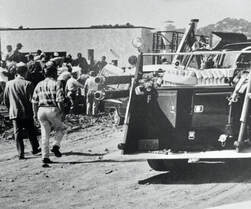 The Larkspur Fire Department was called and within minutes the first apparatus was on scene. It was not an engine with three to five men on board, but rather a GMC squad with a 150-foot live line attached to 400 gallons of water and one firefighter on duty. In the late '50s and early '60s, it was quite common in Marin County to have only one firefighter on duty. When they responded to calls they would be backed up with the town's volunteer firefighters. The only piece of rescue equipment on this rig was an 80-pound E&J resuscitator - not even a coil of rope. The driver, Assistant Chief Harder, realized the situation and positioned the squad a reasonable distance from where the construction workers were gathered looking down at Neil. The fear was even this light piece of equipment might send vibrations through the loose soil and cause Neil's situation to become catastrophic. The resuscitator head was lowered to Neil, and the sound of the oxygen flowing helped calm him down a little. 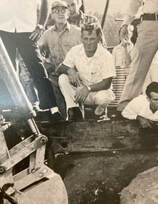 Fire Chief George Bartram lay down next to the hole and talked to him, telling him everything was going to be okay, but everyone knew Neil's situation was tedious. He could slip further down into the hole at any moment. The bottom few feet of the holes were filled with tidal water and each of the rescuers knew that one miscalculation on their behalf, or any shift in the ground in which he was pinned, and this little seven-year-old boy would be at death's doorstep. 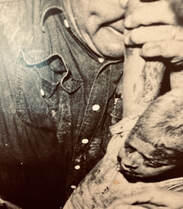 The fear and pressure could be cut with a knife as both rescuers and neighbors began to gather. A quick size-up and evaluation of what type of equipment could be used to rescue little Neil was evaluated. Fortunately for Neil, and thanks to their quick thinking, a backhoe was on site along with its driver. It was acknowledged that they would dig a trench beginning a foot or so from the hole's edge so it would not drop any materials down onto Neil. The concept was that a rescuer could lie in the trench as it got deeper and would therefore get within reach of Neil. As one can see from the images, there was very little upon which to grab to assist him with his removal. The only thing the rescuers had was Neil's t-shirt. As the backhoe operator worked with laser-like precision, little did he know that in his lifetime this would be the most crucial trench he would ever dig. The last foot of dirt was removed by hand, taking every precaution to protect Neil. Finally, the rescue trench was deep enough for Assistant Chief Clair Harder to lay down and reach the boy. This was a critical moment in the rescue; the simple touching of Neil could dislodge him and send him to the bottom. In one brief moment, Chief Harder made a desperate grab of Neil's shoulder. With a fist full of t-shirt and Neil, Chief Harder yelled out “I got him!” The pressure of the situation can be seen on the face of Chief Harder. He slowly released Neil from certain death and miraculously brought him to the surface. This was a very emotional moment for the workforce and the bystanders, and cheers and shout-outs were the order of the day. 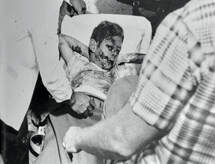 W hen Neil did not come home, his mother assumed he was at his friend's house. When she arrived to take him back for supper she was informed of what was happening to her son. She hurried to the construction site just as Neil was being placed on the ambulances gurney. Seeing her little boy covered with dirt and mud and crying (but without injury), she hugged him and kissed him and reassured him that everything was going to be all right. Mother and son were transported to Marin General. Neil was kept overnight for observation and was released to a happy mother the next day. This rescue, to a young firefighter, has left an everlasting image that I have carried with me all of these 60 years. This was a situation that no textbook could illustrate. “But for the grace of God”, all went well for little Neil Whitlow. Photos by Bob Hax. Editor's Note: Today we welcome guest contributor Tara Maginnis, a resident of Terra Linda. Tara tells of her remembrances of the Terra Linda Fire Department circa 1967. The facts reported and the opinions expressed are those of the writer and do not necessarily reflect those of this website or the Marin County Fire Chiefs. We appreciate Tara's efforts to tell this story. Ed. Tara Maginnis is the Costume Designer at Diablo Valley College in Pleasant Hill, CA, where she teaches Costume Design and Stage Makeup. She is also the daughter of the late C. Leo Maginnis, one of the founding members of the Terra Linda CSD Fire Department, and the late Marion (Simon) Maginnis, former principal of Emerson/Dr. Cobb school in San Francisco, and member of the TLFD Women's Auxiliary. You can see Tara's Costume Designs at https://TaraMaginnis.com
O’Neill & Logan Hardware Store Fire, August 25, 1960By Chief Robert Marcucci (ret) San Rafael Fire Department
Editor's note: In light of the horrific fires California has had recently Chief Lellis opted to supersede today's planned blog article with this one. Today's planned blog will be posted soon. ed. The Men in the Flying Machines - Air SupportBy Chief Bill Lellis (ret)
Today we feature part 2 of Chief Bill Lellis's book about the Larkspur Volunteers. We hope you enjoyed part 1; a lot of great history. Next week will be The Code Three LIVE!; don't miss it at 2 PM PDT. Everybody likes a bargain - and we have one for you. A copy of Chief Bill's book AND a DVD of the Centennial video (now our video of the month). $25 for both (plus shipping)!!! And if you are a current or retired fire fighter $5 off. How's that??? Order yours by emailing and we'll get right back to you with details. marinfirehistory@gmail.com Enjoy both and we'll see you next week. And yes, that is RAIN you saw outside. Retired Fire Chief Bill Lellis recently released his book about the 100+ year history of the volunteers in Larkspur. From time to time we will share a portion of that book here. Next week we will feature a video of the Rose Bowl Centennial which marked the 100 year anniversary of the volunteers. We hope you enjoy this book and learning about the great history this organization has. AND Chief Lellis has a special announcement coming soon about how you can get BOTH the video and the book for your own collection. Our schedule this month is: Today - part 1 of the book Next Wednesday - Rose Bowl Centennial video Wednesday 9/18 - part 2 of the book Wednesday 9/25 - The Code Three LIVE! Chief Lellis finishes his oral history of Larkspur Volunteers Thank you for your continued support. Enjoy. |
AuthorOur Blog announces new site content, and gives the context of the topic and it's relationship to fire service history. Written by Bill Lellis & Paul Smith Archives
August 2022
Categories |

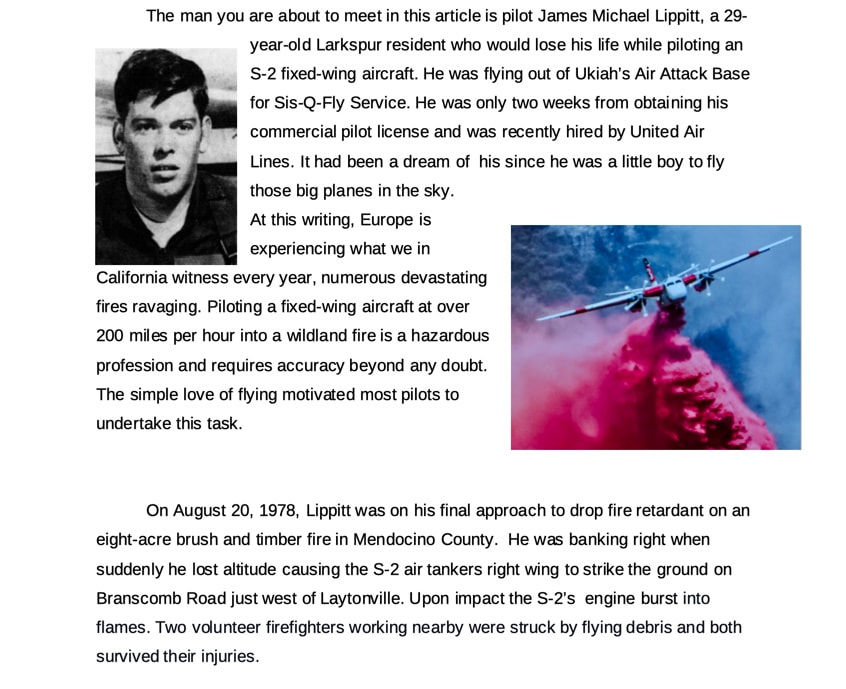
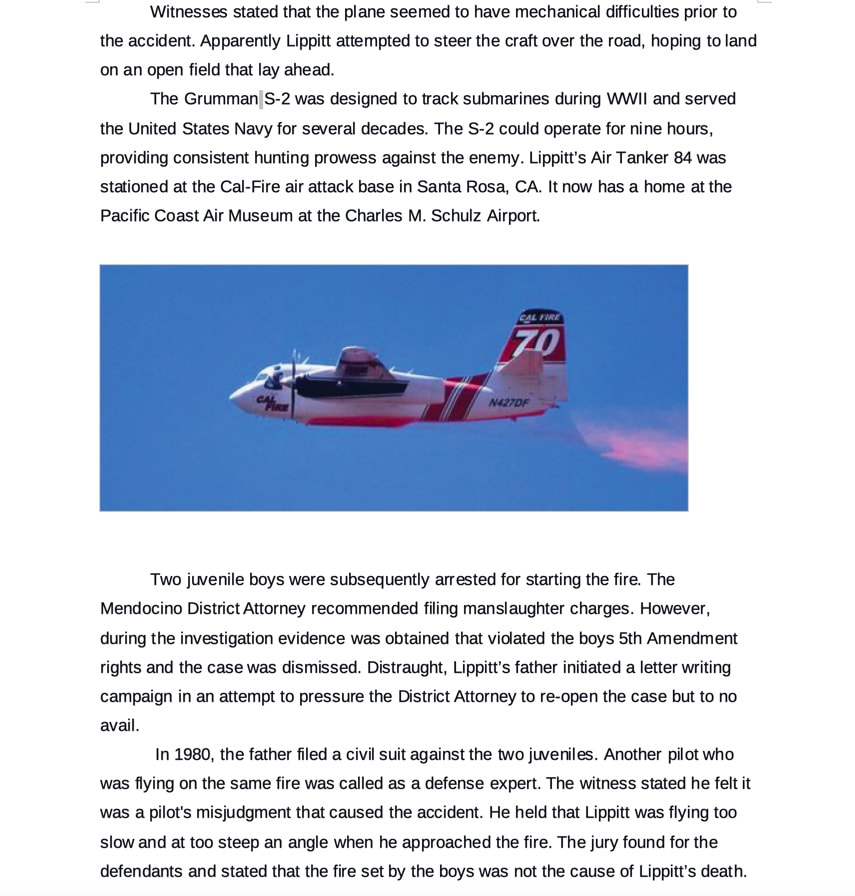
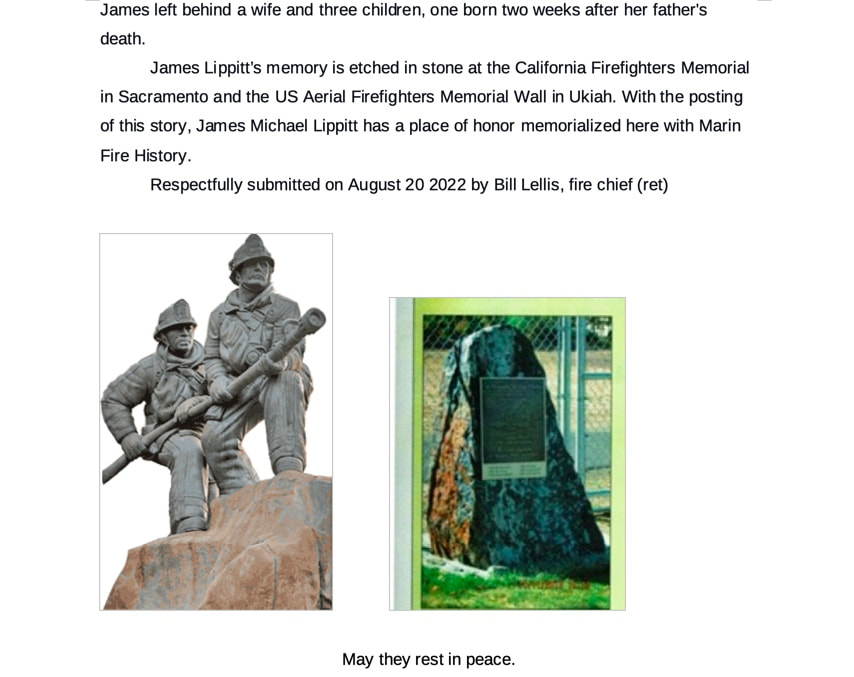
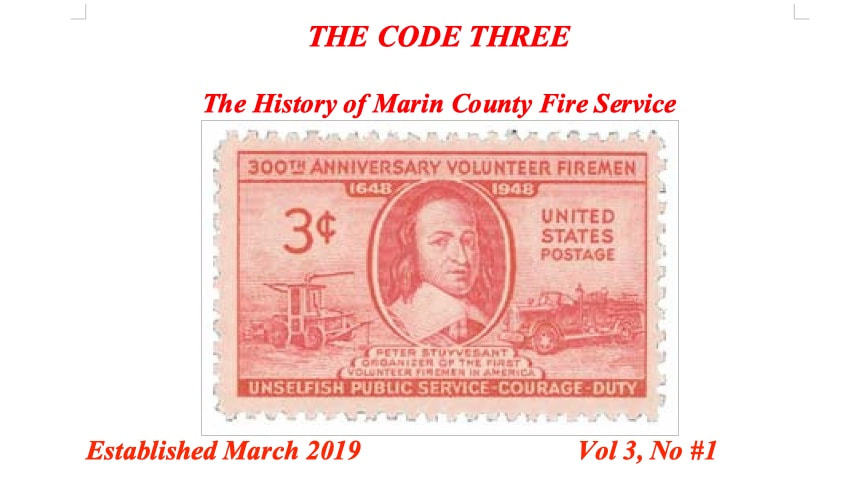
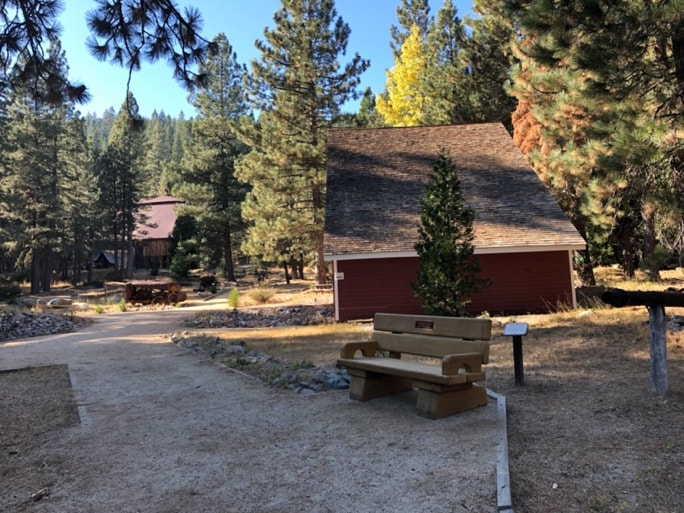
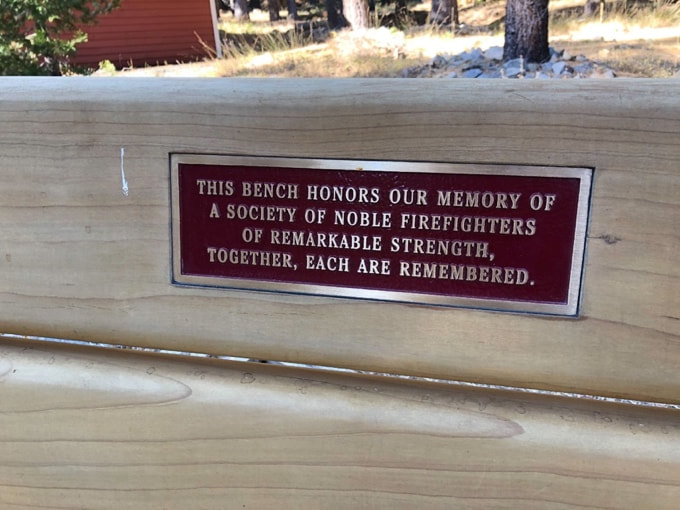
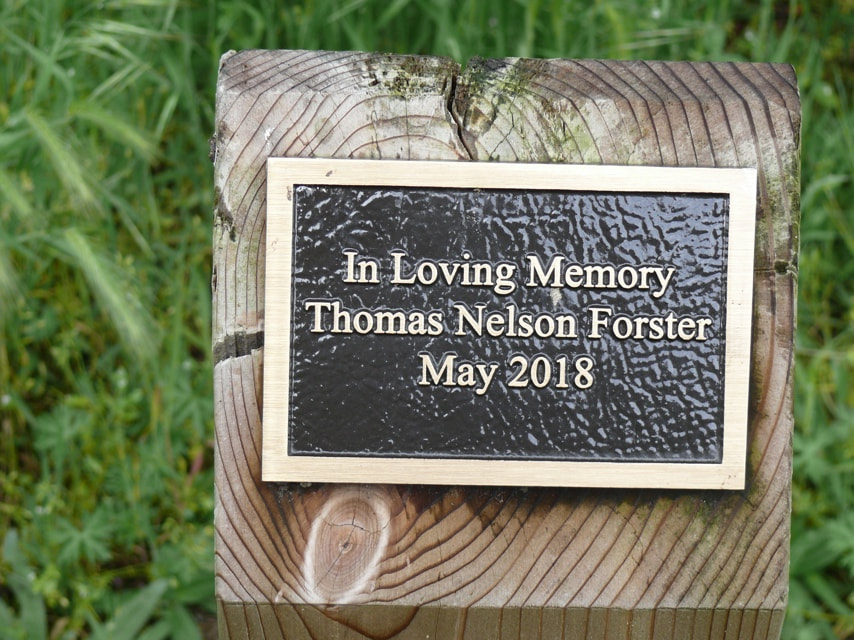
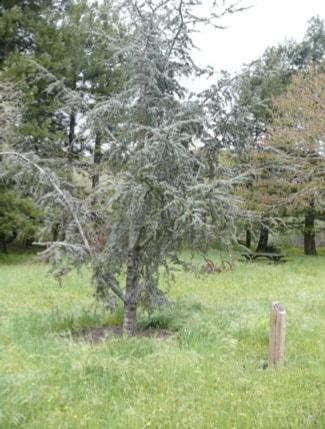
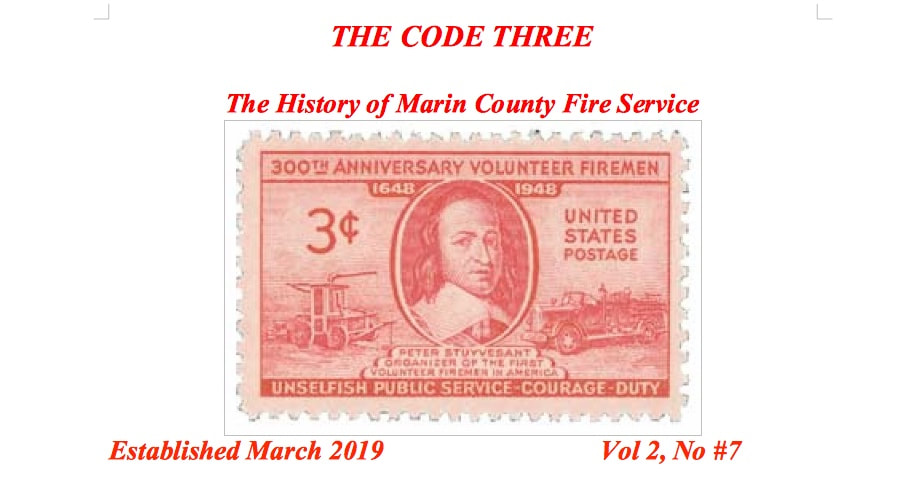
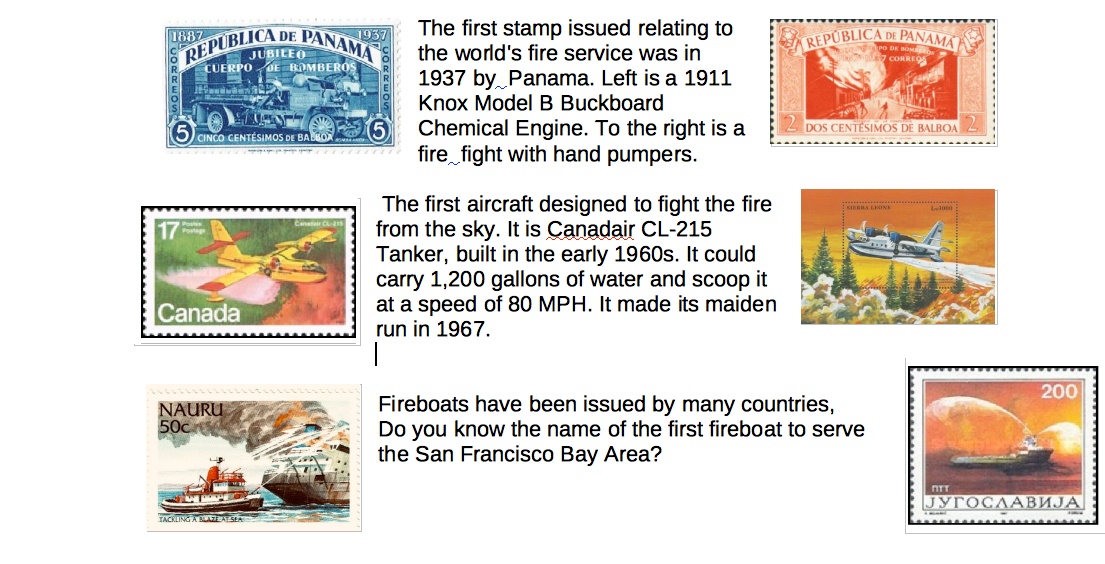


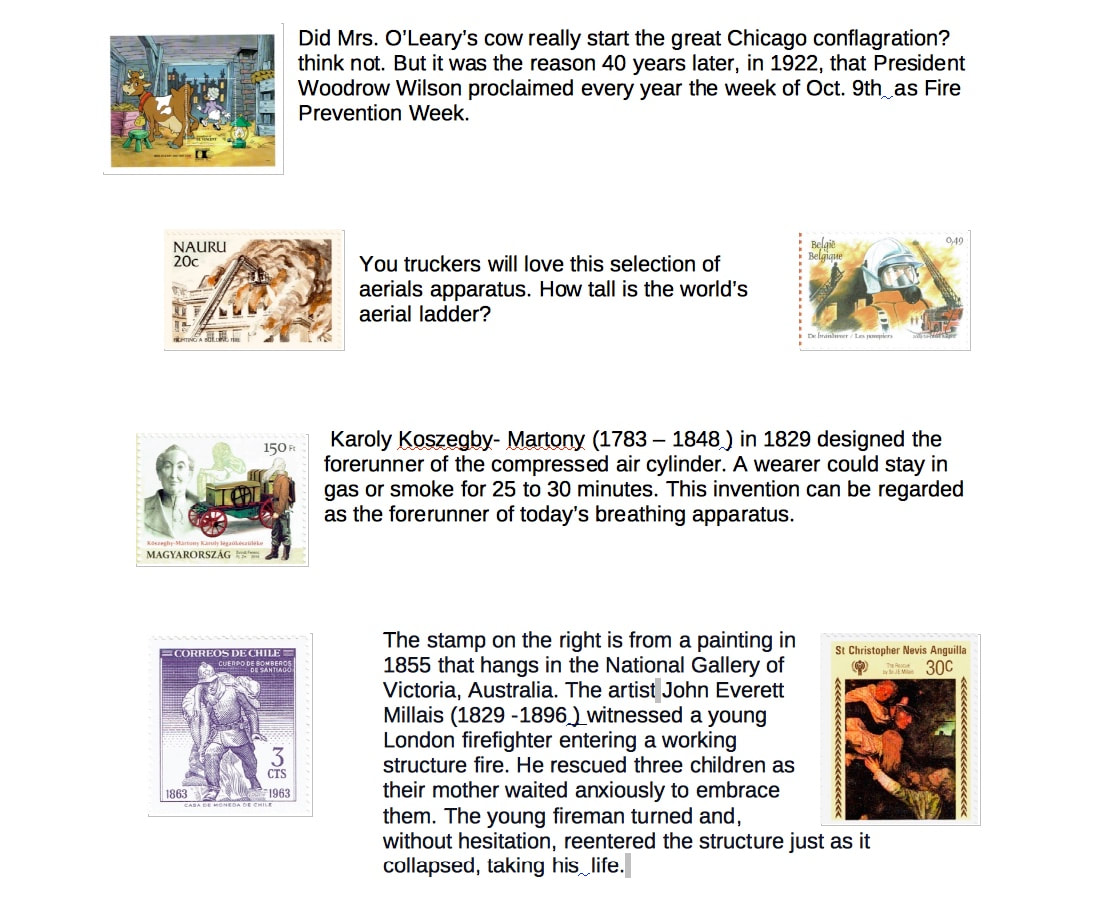

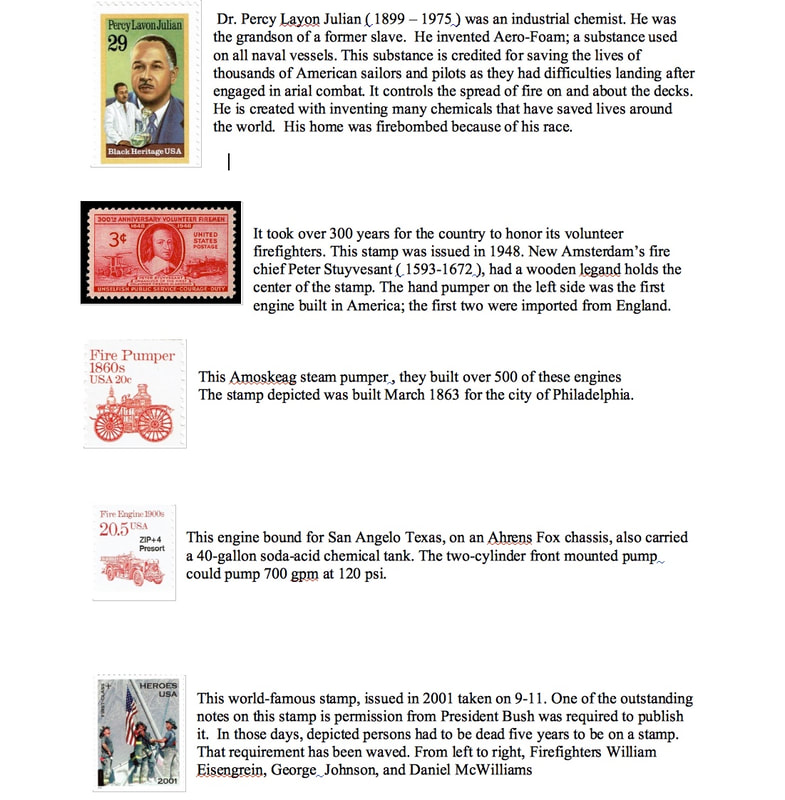


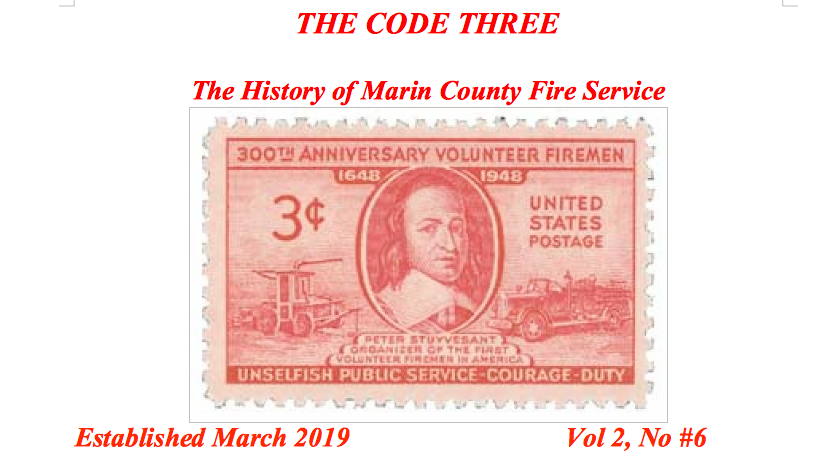
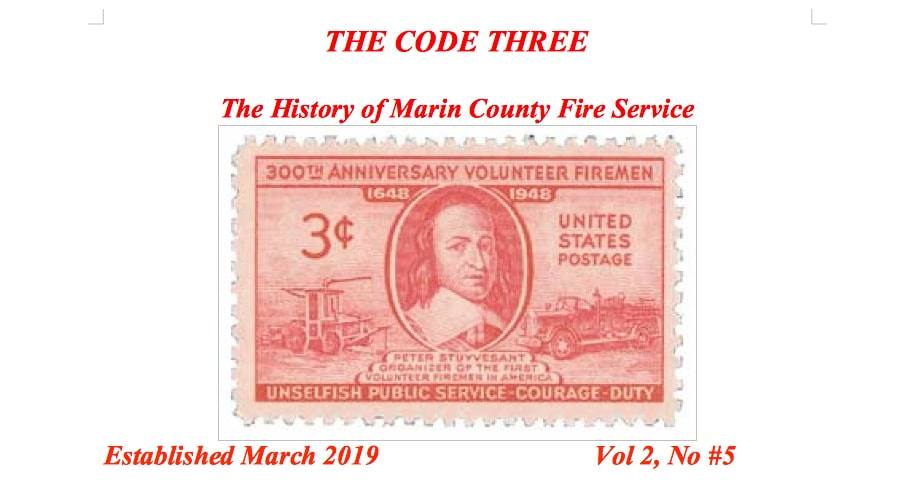

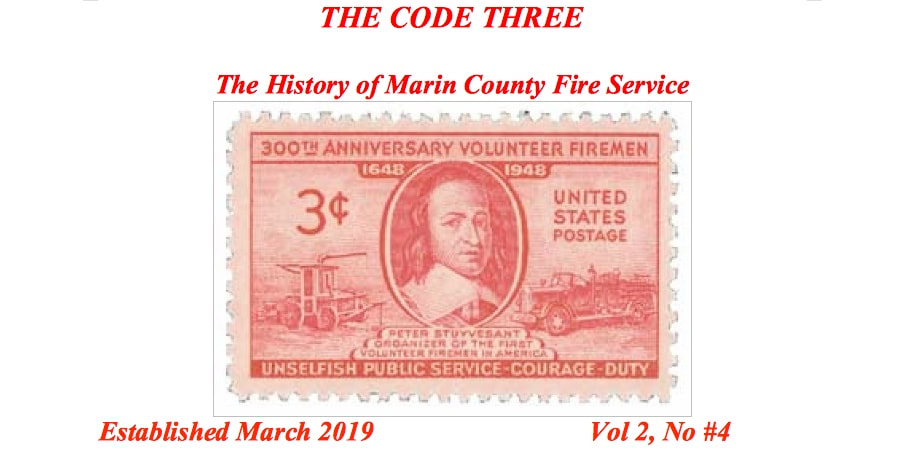

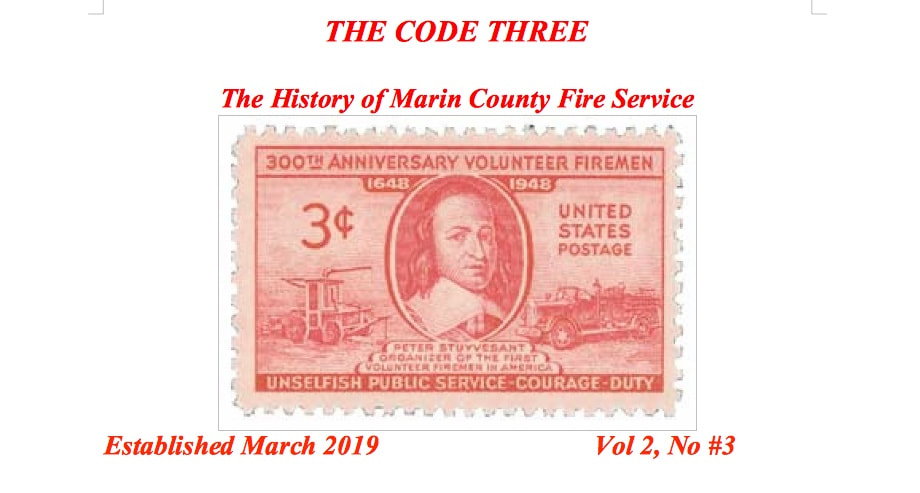
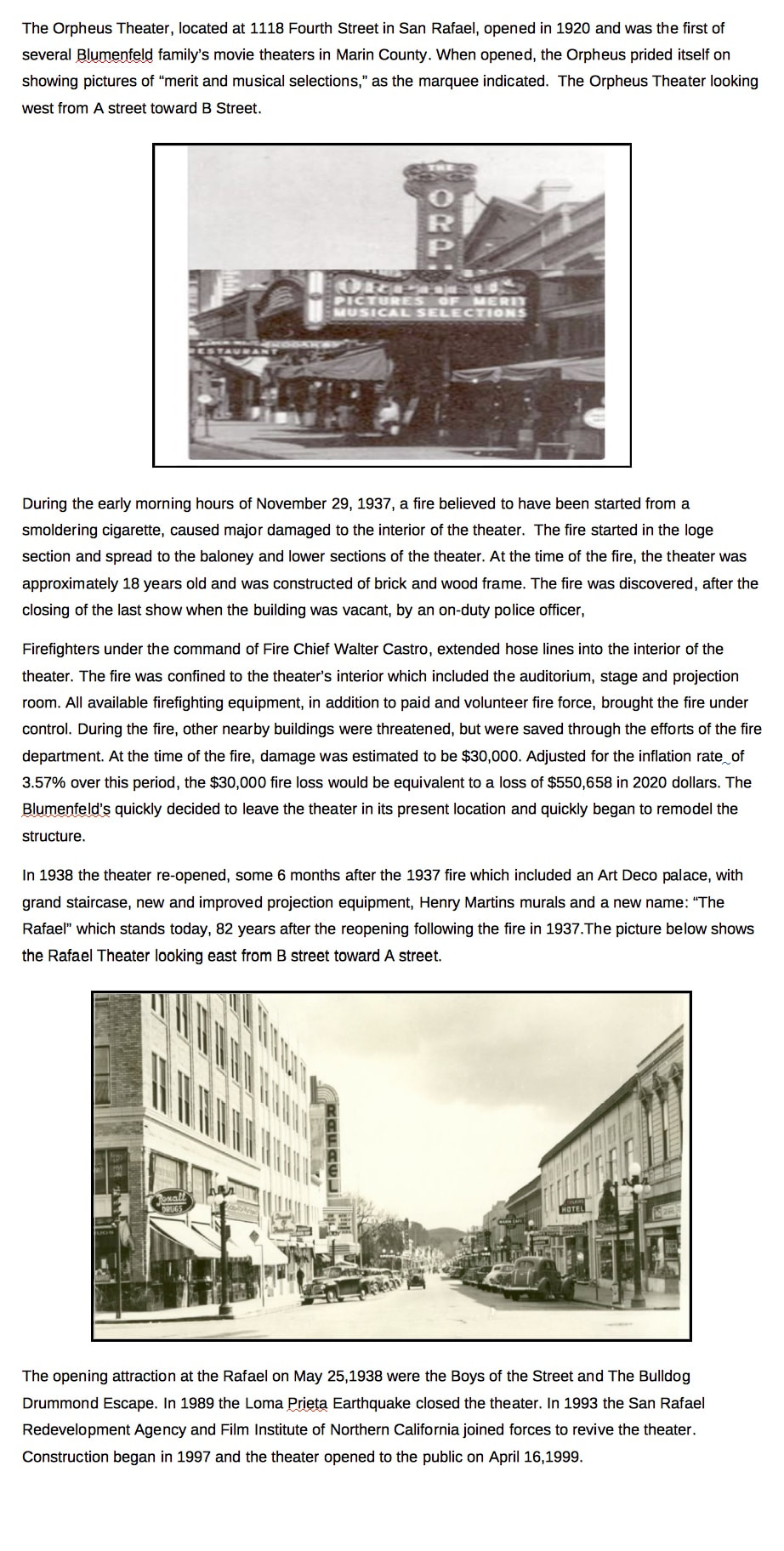
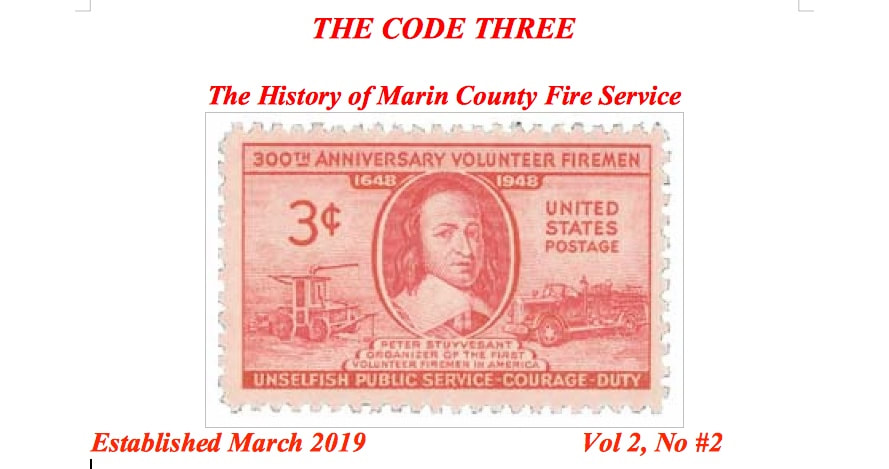

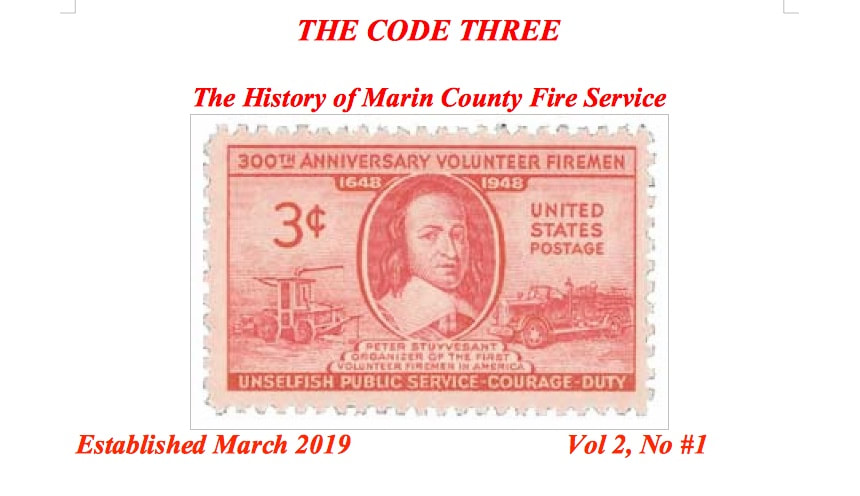

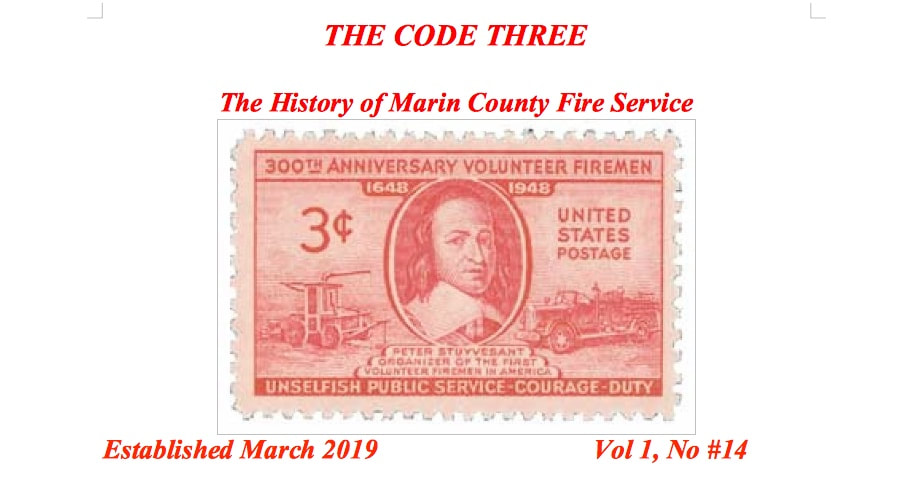
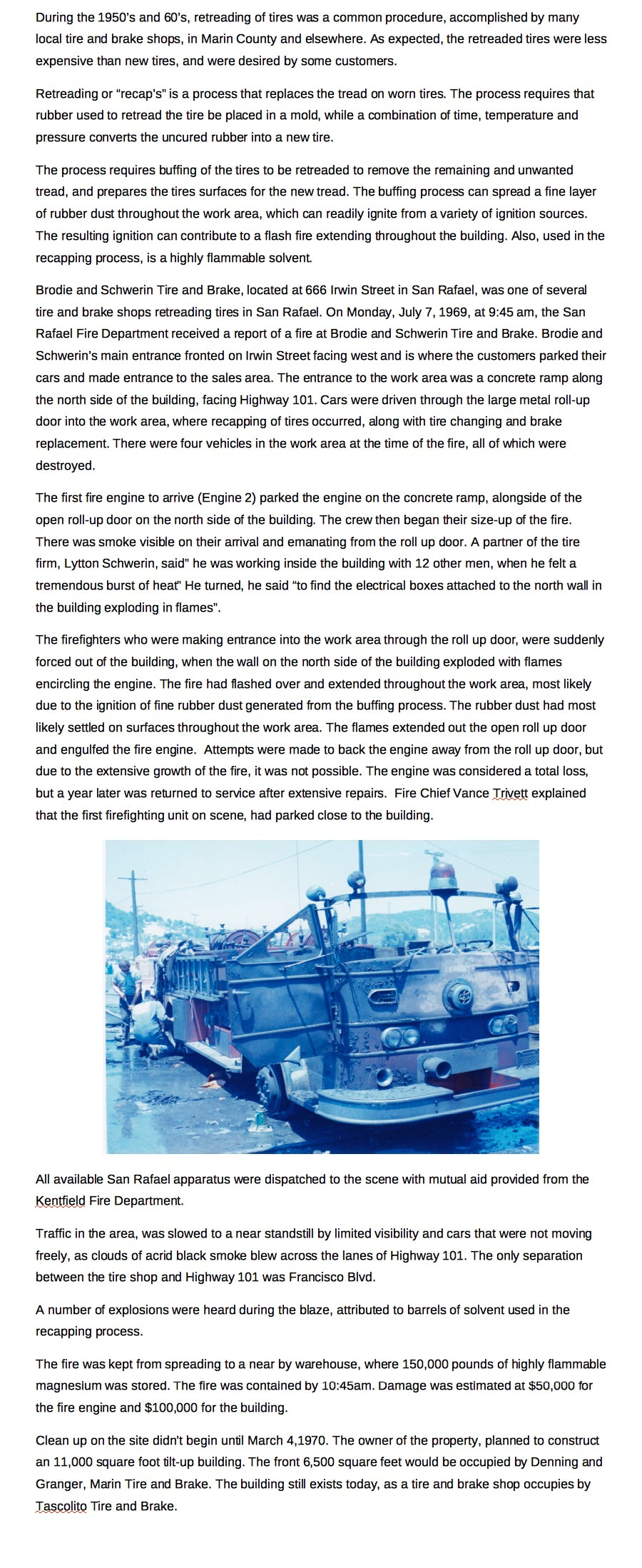
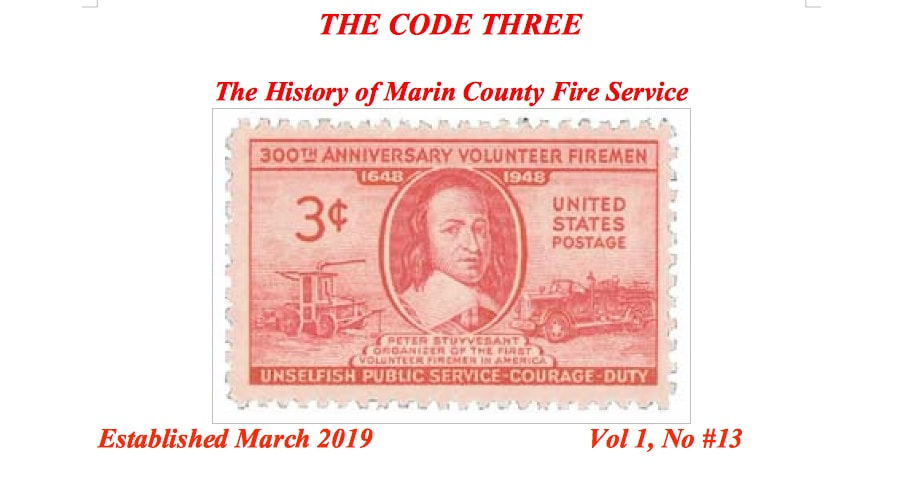

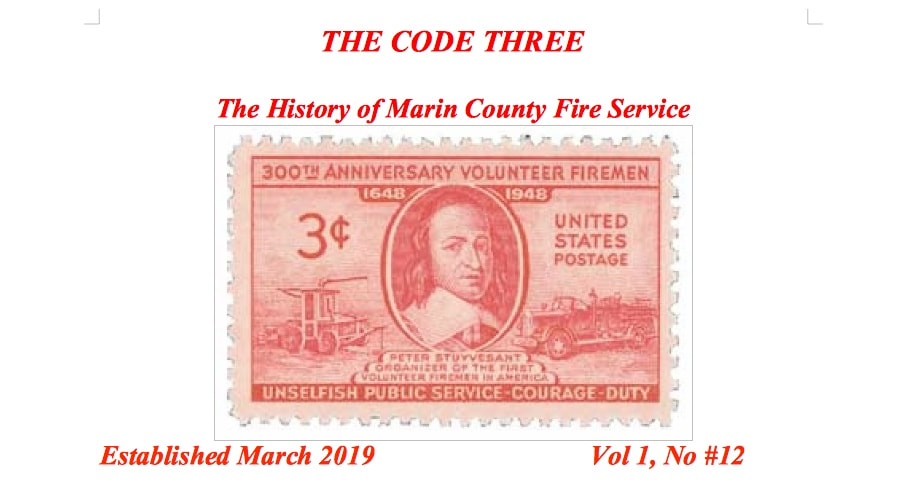
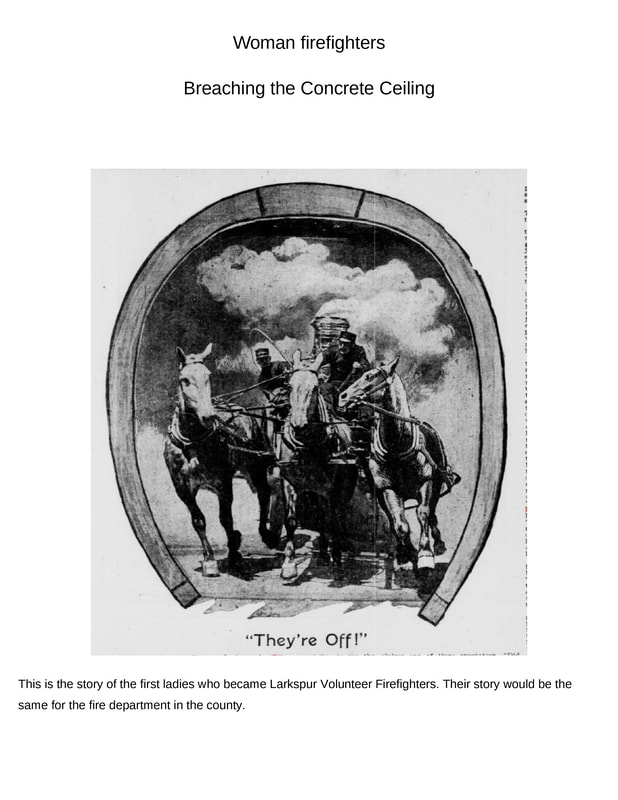
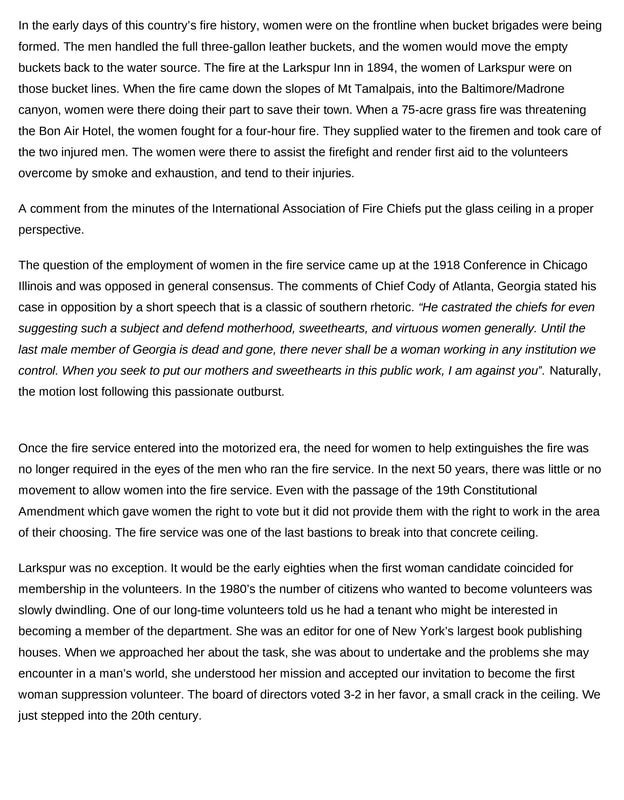
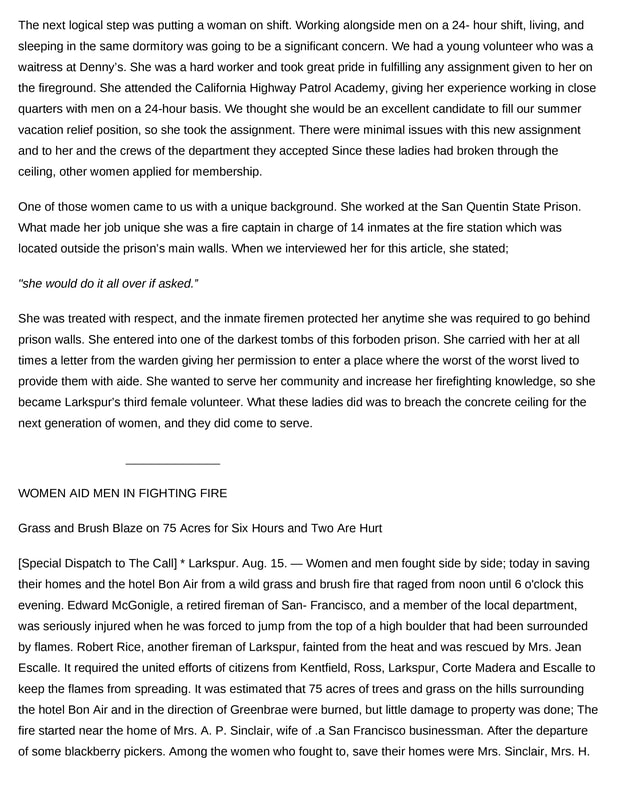
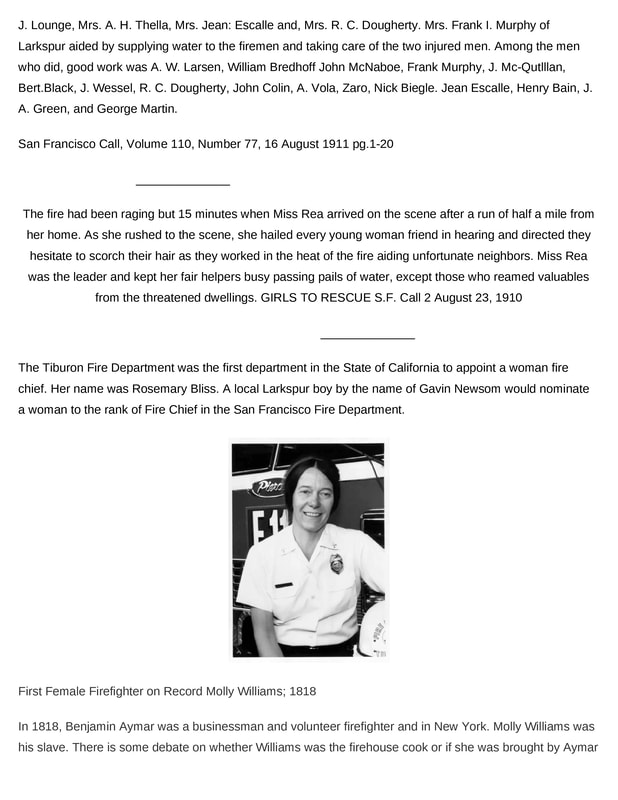
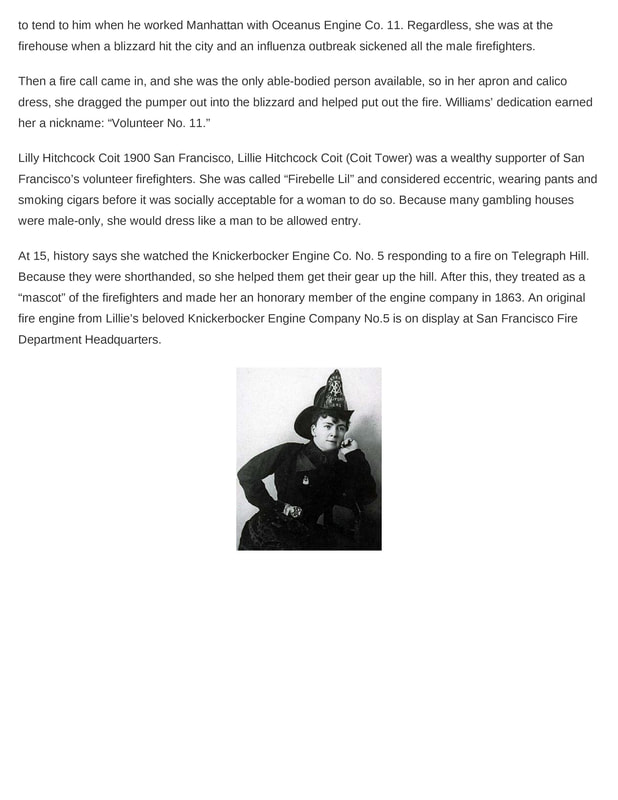
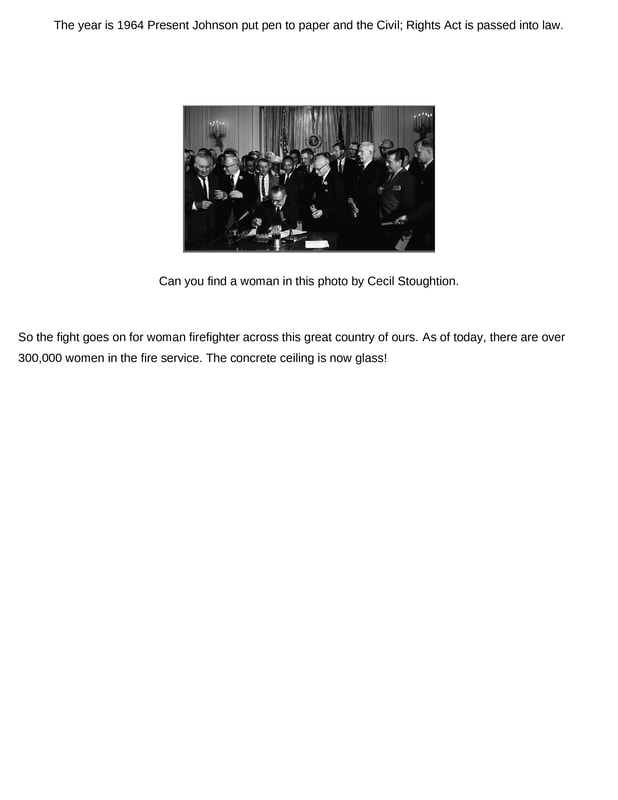
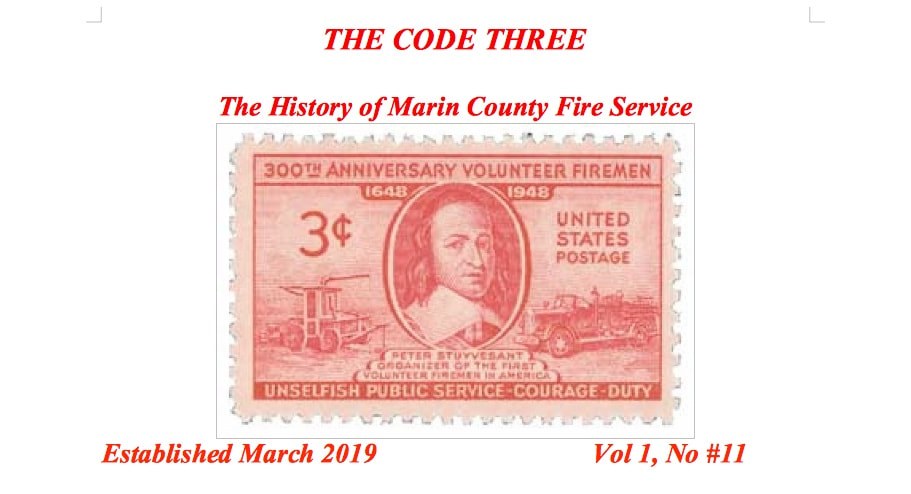

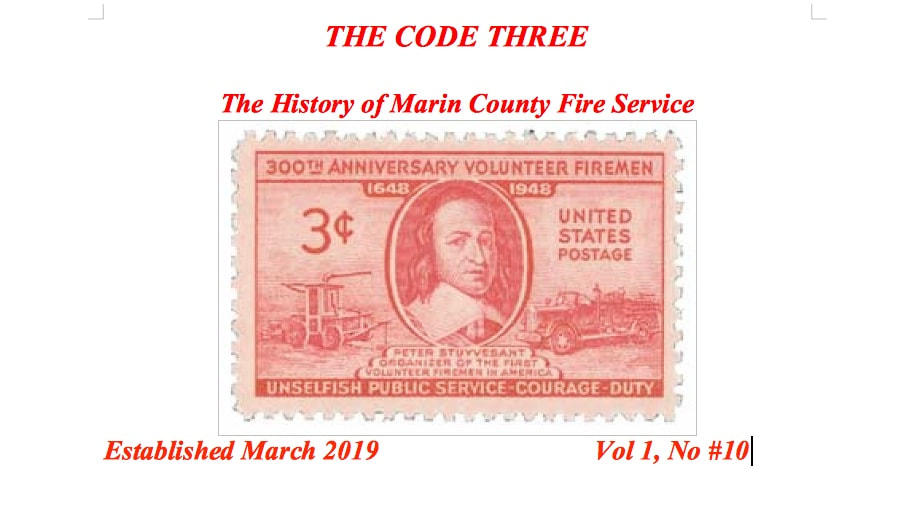

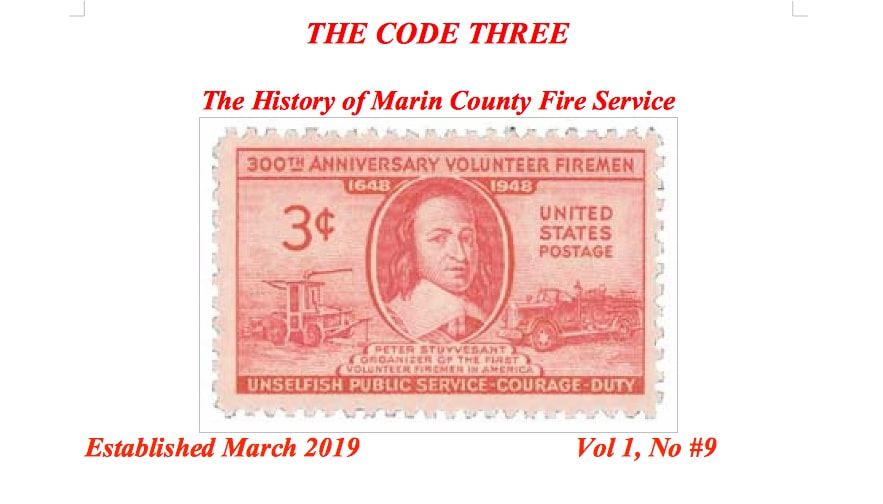

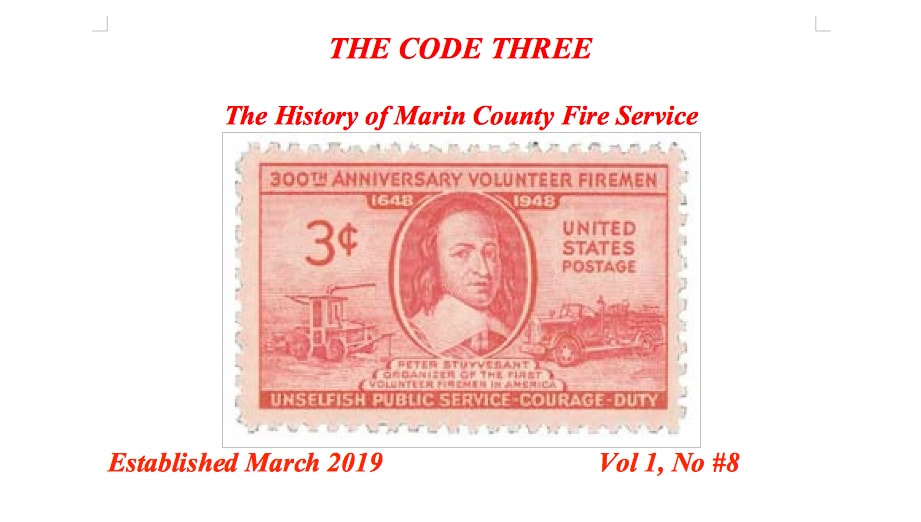

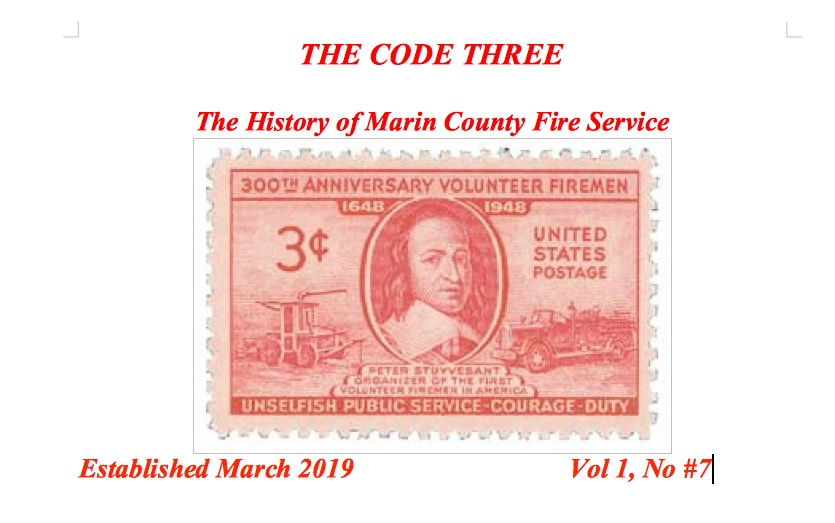

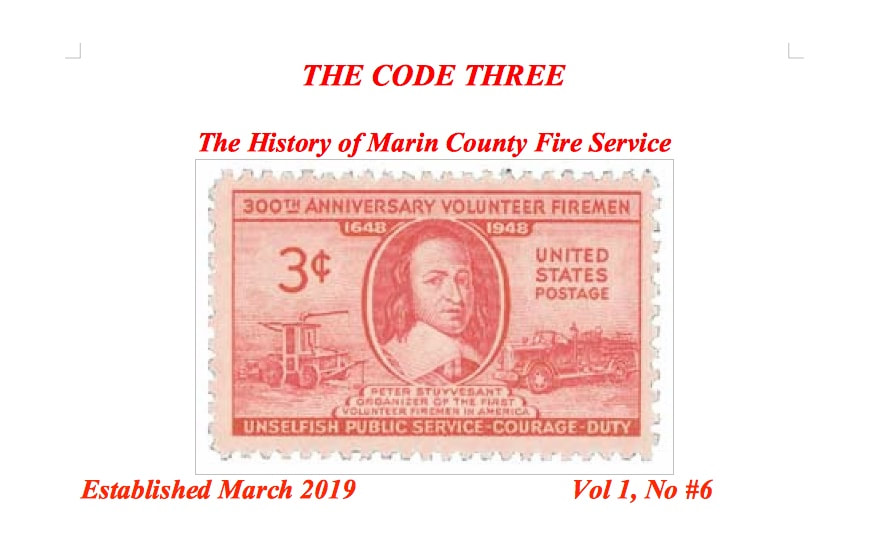

 RSS Feed
RSS Feed